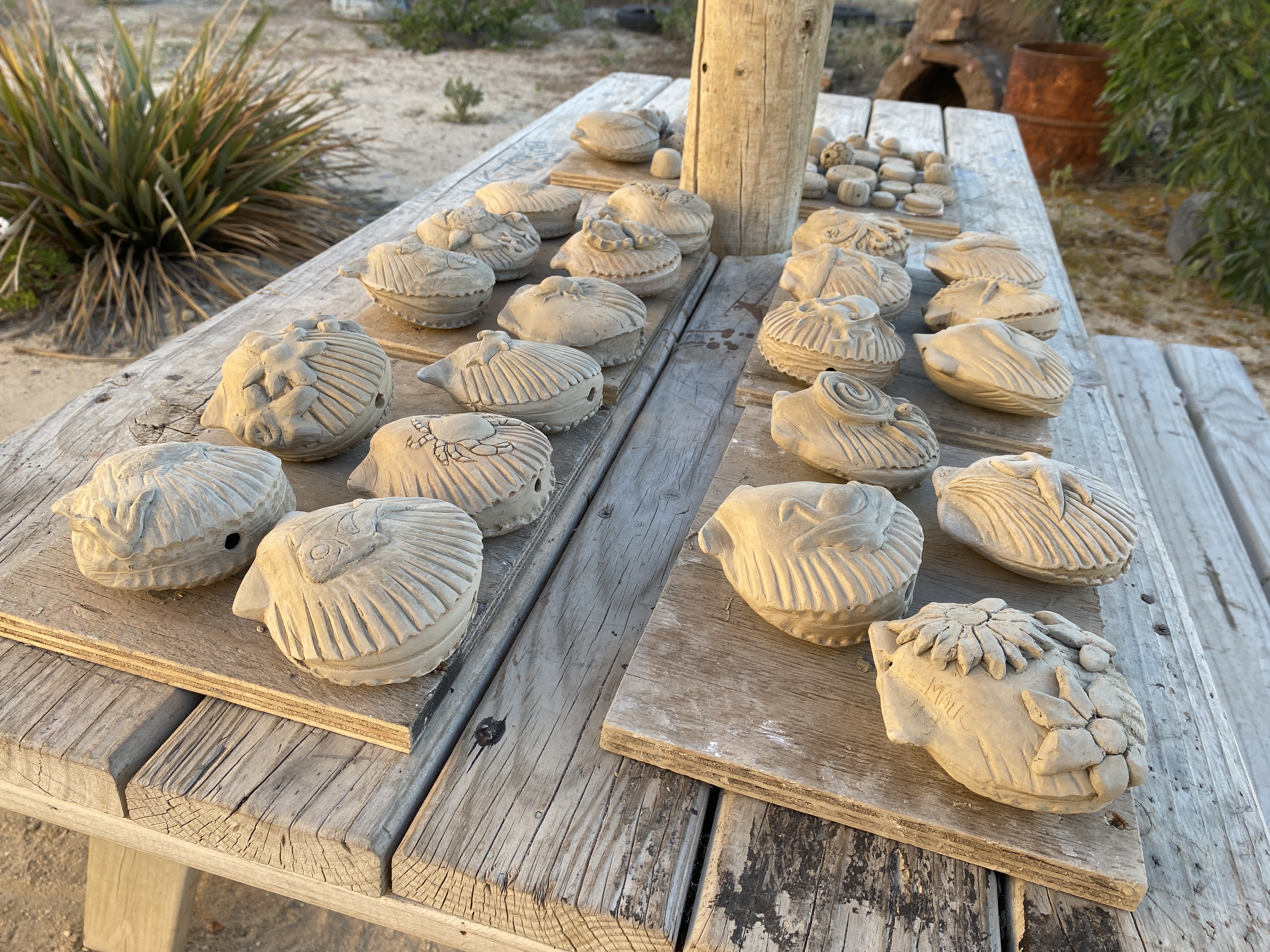
16 Oct Science, Art, and Community Intertwined in Tongoy: Students Create a Ceramic Mural Inspired by Their Coastal Environment
At the Carmen Rodríguez High School in Tongoy, the school community, researchers, and artists from the Millennium Institute of Coastal Socio-Ecology (SECOS) held workshops that combined art, science, and local memory. The activities included the creation of a ceramic mural made with clay from the territory, merging students’ creativity with ocean research.
During a week of intense co-creation, from September 22 to 29, the Carmen Rodríguez High School in Tongoy became an open studio for art, science, and community. In a new phase of the project “Times of Muralism: Socio-Ecological Heritage and Memory,” led by SECOS researcher Fernanda Oyarzún, students of different levels sculpted ceramic scallops using clay collected in Tongoy and the Elqui Valley.
The project links local knowledge with scientific research on coastal ecosystems and seeks to help young people recognize the ecological, cultural, and social value of their territory. “Creative practices can be much more than a means of communicating science. When approached deeply, collaboratively, and transdisciplinarily, they can become catalysts for social transformations toward sustainability. Projects like this, carried out with time and depth, can help us generate knowledge that embraces the full human experience and keep ways of knowing alive in learning,” explains Oyarzún.
The ceramic pieces crafted by the students form a “scallop bank,” where each relief tells a fragment of local identity. The clay used in this project was gathered from different parts of the same territory, allowing students to learn in an applied way about geological and oceanographic processes, as well as the chemical transformations involved when clay turns into ceramic through fire. They also explored its cultural value among Indigenous peoples such as the Diaguita and the El Molle culture, who once inhabited the area. “Ceramics was one of humanity’s first technologies, and being able to create a sensory and embodied connection — to imprint memories and knowledge on it — links students to their identity and traditions,” Oyarzún adds.
The activity involved high school teachers Paula Silva (Art) and Macarena Contreras (Science), who incorporated the project into the school’s technical curriculum, connecting topics such as biodiversity, aquaculture, and heritage. “These projects allow students to interpret their surroundings and leave a living record of what they observe and feel in their territory. It doesn’t matter whether they’re the most artistic or not; everyone connects, everyone finds a way to express themselves. When students work with materials from their own place — like clay or wind — they discover that science isn’t far away; it’s right here, in what they touch, feel, and breathe every day,” says Contreras.
The mural-sculpture will remain permanently installed at the school as a collective space for reflection on the relationship between the sea, community, and knowledge. The installation will also incorporate augmented reality, featuring soundscape recordings made by the students themselves, linking ancient and modern technologies and grounding their knowledge in their territory and diverse experiences.
The week concluded with a traditional clay firing led by anthropologist Isabel Ortiz, a collaborator of SECOS, using the kiln built last year with the school community. In addition, visual artist Amaranta Espinoza led a sound workshop where students recorded the sounds of the sea, the wind, and the voices of the school to be integrated into the final installation.


